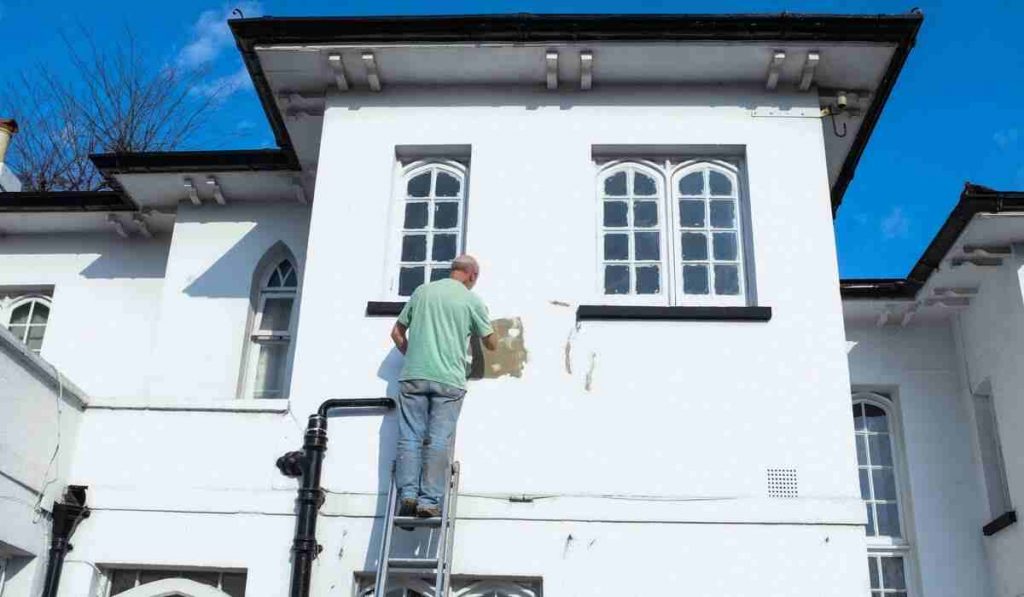When creating your dream home, aside from the colours you’d want to combine for the overall space, you also need to consider the types and finishes. Paint varies, and there are options out there that you might not be aware of.
As you shop around online to find the right fit, you will find it easier until you understand their differences. A painting’s sheen can make a difference in how it looks and finishes. Each has its characteristics.
Paint Finish
The sheen of a paint job is determined by how well light gets reflected off it. Although the amount of pigments and additives in the paint determines the sheen, the fact that some sheens appear nicer and are easier to clean than others should weigh heavily in your decision. Each finish fits a different area depending on the foot traffic and the light that goes into the room. How glossy would you want it to be? A paint’s sheen can affect how it reflects light and how it will last.
1. High-Gloss
High gloss paints reflect and shine the most light compared to other paint sheens. They are prone to highlighting defects, so they fit smaller areas like doors and cabinets. It also lasts longer than any other paint finish and is the easiest to clean.
2. Semi-Gloss
It is a paint finish with high durability and resistance to wear and tear. It is ideal for areas with high foot traffic, like your kitchen, baths, and bedrooms. A semi-gloss paint finish still reflects light, so it will take some extra work to reduce the visibility of defects before painting, but the durability makes it worth it.
3. Satin Paint
The velvety smoothness of satin paint finishes makes them ideal for decorating the inside of a home. It is low-reflective, durable and also easy to clean. Optimal locations include living rooms, bedrooms, and hallways.
4. Eggshell
This type of finish has a soft appearance and is much between a matt and a flat sheen. However, unlike highlight reflectivity finishes like satin, semi-gloss, or high-gloss paints, these finishes wear out more quickly. Although it’s ideal enough for bedrooms or dining rooms, it’s not as functional enough for areas like the kitchen.
5. Flat/Matte
If you prefer to see heavy pigment, you can never go wrong with flat or matte finishes. If your walls have flaws or holes, it’s an effective finish that can make your room seem flawless. They don’t bounce light off the wall like mirrors and will fit adult bedrooms.
Paint Types
1. Water-based paint
Water-based paints are versatile enough to be used for interior and exterior projects and adhere well to a wide variety of surfaces. You can use it in damp or humid environments like bathrooms, kitchens, laundry rooms, basements, or exteriors. As a result of their excellent levelling capabilities, which produce a smooth finish, these paints get easily mistaken for oil-based alternatives in appearance and performance.
2. Oil-based paint
If you’re looking for another paint that works for humid areas, oil-based paint is your best option. It is highly versatile due to its ability to adhere to various substrates and its long-lasting and quality appearance.
3. Low toxic paints
These paints are safer for the environment and your health than most others on the market because they are non-toxic and contain very low Volatile Organic Compounds.
Since the VOC solvents keep the “wet edge” around the product longer, you have more time to work with it before it dries completely. If you reduce volatile organic compound (VOC) solvents, the coating formulation must change to make up for the difference. You’ll need to tweak your application techniques to get the finest results.
4. Primer
Primers are something used before the actual paint is applied. In addition to providing a more stable surface than a blank wall, it has been designed to mask any blemishes on the surface so that the colour is the focus.
You can use it before the actual painting process begins. Primers act as a sealant to improve paint’s ability to stick to surfaces, extending the paint’s useful lifespan.
5. Spray paint
Better coverage, a smoother finish, and eliminating brush strokes, bubbles, and cracks make this method preferable to using a brush. Priming and properly prepping surfaces before spray painting them increases their durability and longevity.
6. Enamel paint
This paint is more robust and endures longer than other paints because of its special formulation. While most enamel paints have an oil basis, water-based options are more suited to furniture and cabinets.
7. Emulsion paint
In contrast to oil paints, most emulsions are water-based and dry quickly. Since it is resistant to alkalis, has a substantial texture, and retains its colour more effectively, it is the preferred paint by most painters.
8. Eco-friendly paints
Eco-friendly paints, unlike traditional paints, do not include hazardous VOCs (VOCs). Natural ingredients like balsam, citrus, lay, and milk proteins can be found in these items.
You can safely use them indoors confidently because they emit an almost slight smell and are extremely low maintenance. Because of this, those who suffer from asthma or allergies can enjoy it without worry.
9. Chalk paint
This type of paint is perfect even for newbies. It won’t require much preparation, and it’s ideal for any surface, outdoors or indoors. It also doesn’t need preparation as you immediately dip your brush and paint into furniture, melamine, flooring, fabric or glass.
Feeling overwhelmed? If you need help deciding which one fits you, our team of experts here at Brushworks can help you with that. For over 30 years, Brushworks has been serving the people of Sydney, providing high-quality residential, strata and commercial painting and maintenance works. Call us at 0401 533 408 or book a free quote.

